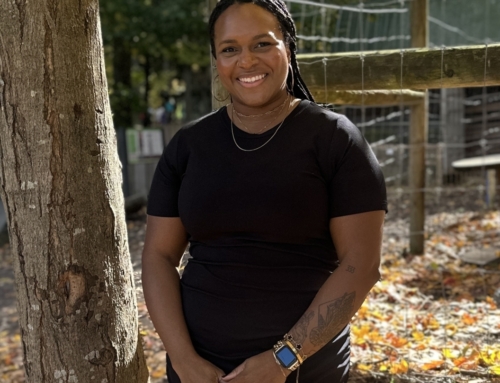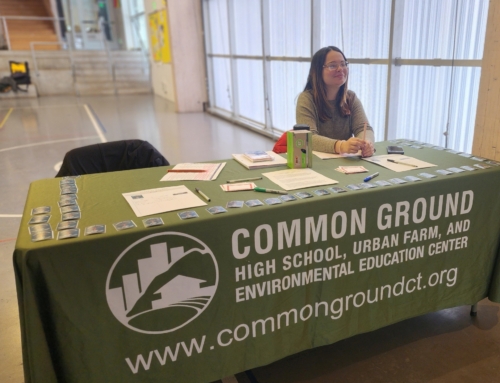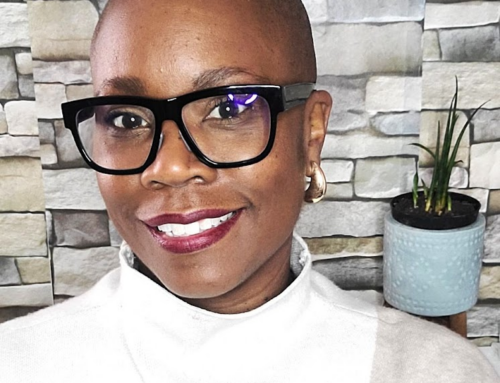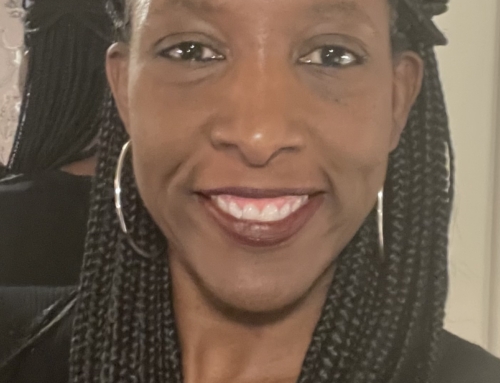By Kate Cebik
College is a big deal. It can change the course of a life. Still, I was unprepared for the amount of celebration every acceptance receives here at Common Ground. At my high school, when someone got into college, they might tell their friends, and family might brag it around, but the school itself didn’t seem to take much notice. Not so at Common Ground. Here, this momentous thing gets its proper props. This time of year, the celebrations are nearly daily.
On November 13th, I received this email: Congrats to Ashley for receiving her first acceptance (the first acceptance of the year) to Marymount Manhattan College! This was followed by strings of replies: yippees, electronic high-fives, emails with dancing gifs, and applause from all corners of our community—teachers, staff, and parents.
Cool, I thought, the first acceptance of the year is a fun milestone. But it didn’t stop there. Every acceptance is honored.
A bit later, as I walked through Common Ground High School, I heard the voice of the school director, Ms. Cox, over the loudspeaker: “Way to go Meisha, accepted to Evergreen, and recipient of a scholarship!” Applause and cheers spilled from the classrooms and halls.
If you follow us on Twitter or have liked us on Facebook, you may have seen the many kudos shouted from the mountaintops.
Awesome job Meghan Brooks, accepted to Curry College and winner of essay contest—complete with scholarship!
Woot! Ash got into Philly U over the snowstorm break! Elmer got into Quinnipiac!!
Does the chatter clog our inboxes? Sure. Is it over the top? Absolutely not. The bottom line? Education matters. Every education. And to achieve excellence in education, it requires for you to know more about it.
Education matters for the individual student:
- The average annual income for high school dropouts is $17,299.The average annual income for high school graduates is $26,933. The average annual income for college graduates with an associate degree is $36,645. And the average annual income for graduates with a bachelor’s degree is $52,671. (U.S. Bureau of the Census, 2006)
- The unemployment rate for college graduates is just 2.4 percent, which is less than half the rate for high school graduates (5.2 percent) and less than one-third the rate for high school dropouts (8.5 percent). (Bureau of Labor Statistics, 2008)
- On average, a high school graduate lives nine years longer than a dropout and is less likely to suffer from cardiovascular disease, cancer, lung disease, diabetes and other infections. Higher levels of education are associated with better health across all ages and incomes. (Muenning, 2005; Wong, Shapiro, Boscardin and Ettner, 2002; Baum and Ma, 2007)
Education matters for us all:
- If the approximately 1.2 million high school dropouts from the class of 2008 had earned diplomas along with their classmates, the nation’s economy could have benefited from an additional $319 billion in income over their lifetimes. (Alliance for Excellent Education, 2008)
- Crime reduction: Individuals who are arrested or incarcerated are less likely to have completed high school. Approximately 75 percent of state prison inmates, 59 percent of federal inmates and 69 percent of jail inmates did not complete high school. (Harlow, 2003)
- Educated individuals are also more likely to volunteer, vote and raise healthier, better educated children. (Baum and Ma, 2007; Wolfe and Haveman, 2002)
So please, encourage students you know, at Common Ground and everywhere, to stay in school and pursue education. We are proud of our 93% college acceptance rate, and want to continue to push that number up. I’m proud that Common Ground was one of just 4 schools in Connecticut to make Newsweek’s list of schools “Beating the Odds.” We believe it because it is true: Education changes lives.
Please feel free to strap on a party hat and celebrate with us.

Congrats to:
- Marcel Aguirre, accepted to the University of New Haven, Green Mountain College, North Dakota State University
- Aaliyah Barrett, accepted to the University of New Haven, the University of Maine at Machias, and Utica College
- Meghan Brooks, accepted to Curry College, Green Mountain, and Housatonic College
- Damien Cruz, accepted to Housatonic College
- Elmer Galvez, accepted to the University of New Haven, Southern CT State University, and Quinnipiac University
- Michael Green-Kelsey, accepted to the University of New Haven
- MeishaHennessy, accepted to Evergreen State College
- Ashley Holmes, accepted to Hawaii Pacific, Marymount – Manhattan, Philadelphia University, and Quinnipiac
- Dante Petti, accepted to Earlham College, Temple University, Eckerd College, Clark College, Alfred University, the University of New Haven, the University of Vermont, Drexel University, and Eastern Ct State University
- Shantell Ratchford, accepted to Lincoln College
- Jesus Reyes, accepted to the University of Maine at Machias, and Unity College
- Yasmine Scipio, accepted to Quinnipiac
- Reilly Stevens, accepted to Mills College
- Stephanie Torres, accepted to Sterling College
- Giana Vargas, accepted to Curry College
[AFG_gallery id=’35’]
With 152 applications still awaiting response, this list will most certainly continue to grow and grow! Way to go, students. Cheers to you.
Sources:
Alliance for Excellent Education. (2008). The high cost of high-school dropouts: What the nation pays for inadequate high schools. Washington DC: Alliance for Excellent Education. Baum, S. & Ma, J. (2007). Education pays: The benefits of higher education for individuals and society. Washington, DC: The College Board. Bureau of Labor Statistics. (2007, July). Labor Force Statistics from the Current Population Survey. Harlow, C. (2003). Education and correctional populations. In Bureau of Justice Statistics Special Report. Washington DC: U.S. Department of Justice. Muenning, P. (2005). Health returns to education interventions. Paper prepared for the Symposium on the School Costs of Inadequate Education at Columbia University, New York. U.S. Bureau of the Census. (2OO6). Income in 2005 by educational attainment of the population 18years and over (Table 8). Washington DC: U.S. Government Printing Office. Wolfe, B. L. & Haverman, R. H. (2002, June). Social and nonmarket benefits from education in an advanced economy. Paper prepared for Conference Series 47, Education in the 21st Century: Meeting the Challenges of a Changing World. Boston: Federal Reserve Bank of Boston. Wong, M., Shapiro, M., Boscardin, W., & Ettner, S. (2002).Contribution of major diseases to disparities in mortality. New England Journal of Medicine, 34, 1585-1592.





Leave A Comment